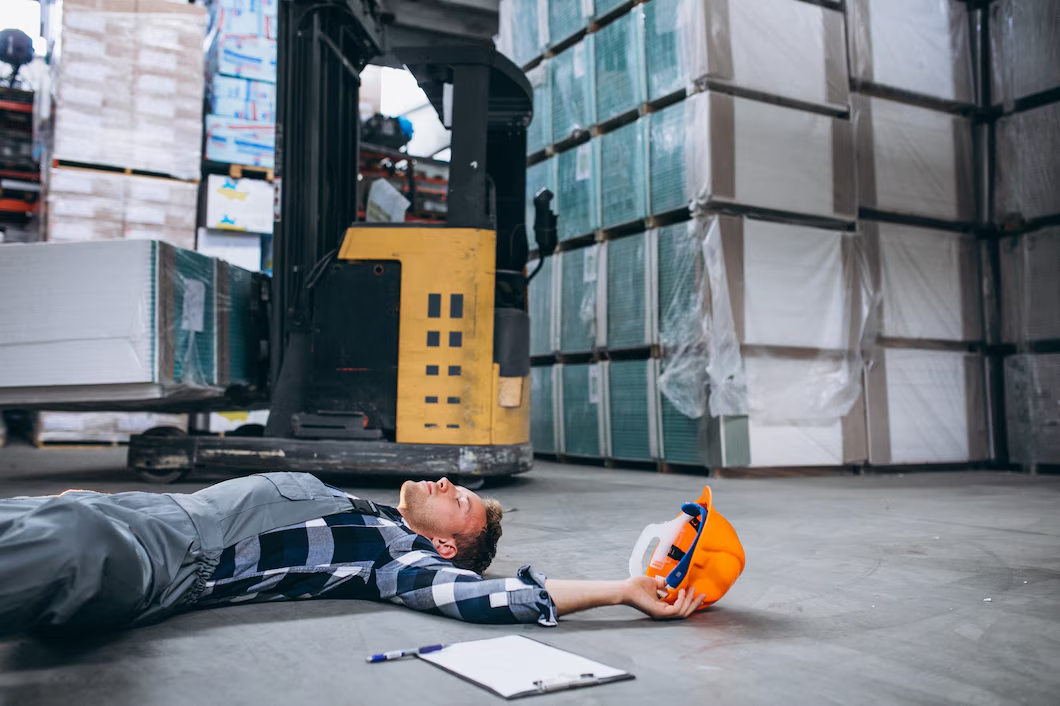Construction Accidents: Addressing Injuries from Machinery Accidents
Construction sites are bustling hubs of activity, where skilled workers transform blueprints into tangible structures. However, these environments also present significant risks, particularly when it comes to machinery accidents. Understanding these accidents and how to address injuries can be crucial for workers and employers alike.
Understanding Construction Machinery Accidents
The use of heavy machinery is indispensable in construction projects, yet it poses dangers that can lead to severe accidents. Bulldozers, cranes, and forklifts are just a few examples of machinery that, if mishandled, can cause serious injuries or even fatalities. The complex operation and maintenance of these machines require specialized knowledge and attention to detail.
Accidents involving construction machinery often result from a combination of human error and mechanical failure. Poor maintenance, inadequate training, or lack of proper safety protocols can all contribute to hazardous situations. It’s essential for construction companies to implement comprehensive safety measures and ensure that all machinery is regularly inspected and maintained.
The repercussions of machinery accidents extend beyond physical injuries. They can lead to project delays, increased insurance premiums, and substantial financial losses. Therefore, addressing these accidents is not only a matter of safety but also of maintaining productivity and profitability on construction sites.
Common Types of Machinery Accidents
Several types of machinery accidents are prevalent in the construction industry. Understanding these can help in devising strategies to prevent them. One common type is equipment rollovers, which occur when heavy machinery tips over due to uneven terrain or operator error. These incidents can cause crushing injuries and pose a threat to anyone nearby.
Entanglement accidents happen when workers get caught in moving parts of machinery, leading to severe injuries or amputations. Ensuring that all safety guards are in place and functioning can mitigate these risks. Additionally, struck-by accidents, where workers are hit by moving machinery or falling objects, are frequent and often result in serious injuries.
Each type of accident necessitates specific preventive measures and response strategies. Employers must prioritize safety training and equipment inspections to minimize the risk of such incidents occurring on site.
The Role of Safety Protocols
Implementing robust safety protocols is critical in preventing machinery accidents on construction sites. These protocols encompass various aspects, including training, equipment maintenance, and emergency response procedures. Well-documented safety guidelines serve as a reference for workers and supervisors, ensuring everyone is aware of their responsibilities.
Regular safety training sessions are vital to keep workers informed about the latest safety practices and machinery operation techniques. These sessions should include hands-on training and simulations to prepare workers for real-life scenarios. Additionally, employers should foster a culture of safety by encouraging open communication and reporting of potential hazards.
Equipment maintenance is another crucial component of safety protocols. Regular inspections and timely repairs can prevent mechanical failures that lead to accidents. Keeping detailed maintenance records ensures that machinery is always in optimal working condition.
Legal and Financial Implications
Machinery accidents can have significant legal and financial implications for construction companies. When an accident occurs, investigations are conducted to determine the cause and assess liability. If negligence is found, companies may face hefty fines and legal proceedings, tarnishing their reputation and impacting future business opportunities.
Workers injured in machinery accidents may be entitled to compensation through workers’ compensation claims. These claims cover medical expenses, lost wages, and rehabilitation costs. However, navigating the claims process can be complex, and injured workers may need legal assistance to ensure they receive fair compensation.
In cases where third-party negligence is involved, such as faulty machinery design or improper maintenance by another contractor, additional legal avenues may be pursued. Construction companies should be aware of these potential liabilities and have contingency plans in place to address them effectively.
Importance of Training and Education
Training and education are fundamental in reducing the occurrence of machinery accidents on construction sites. Well-trained workers are more likely to operate equipment safely and respond appropriately to emergencies. Employers should invest in comprehensive training programs that cover equipment operation, safety protocols, and emergency response.
Continual education ensures that workers stay updated on the latest safety regulations and technological advancements in construction machinery. Offering refresher courses and certifications can enhance workers’ skills and boost their confidence in handling equipment safely.
Education should extend beyond individual workers to include supervisors and management. Leaders play a crucial role in enforcing safety protocols and fostering a culture of safety within the organization. By leading by example, supervisors can inspire workers to prioritize safety at all times.
The Role of Technology in Preventing Accidents
Advancements in technology have introduced innovative solutions to enhance safety on construction sites. From wearable devices that monitor workers’ vital signs to drones that inspect hard-to-reach areas, technology is revolutionizing accident prevention efforts. These tools provide real-time data and insights, allowing for proactive risk management.
Implementing technology-driven solutions requires careful planning and integration into existing safety protocols. Companies must ensure that workers are adequately trained to use these tools effectively. Additionally, data collected from technological devices can inform decision-making and improve overall safety strategies.
While technology offers promising benefits, it should complement, not replace, traditional safety measures. A balanced approach that combines human vigilance with technological assistance is key to preventing machinery accidents.
Building a Culture of Safety
Creating a culture of safety is essential for long-term accident prevention. This involves instilling a mindset where safety is prioritized above all else. A strong safety culture empowers workers to take ownership of their safety and encourages proactive participation in identifying and mitigating risks.
Open communication is a hallmark of a safety-focused culture. Workers should feel comfortable reporting hazards or unsafe practices without fear of retaliation. Regular safety meetings and feedback sessions provide opportunities for workers to voice concerns and contribute to safety improvements.
Recognition and rewards for safe behavior can further reinforce a culture of safety. Acknowledging workers who consistently adhere to safety protocols encourages others to follow suit. Ultimately, a culture of safety fosters collaboration and trust among workers, creating a safer work environment for everyone.
Addressing Injuries and Rehabilitation
Despite preventive measures, machinery accidents can still occur, resulting in injuries that require immediate attention and rehabilitation. Prompt medical treatment is crucial to minimize the impact of injuries and facilitate recovery. Employers should have clear procedures in place for responding to accidents and ensuring injured workers receive appropriate care.
Rehabilitation is a vital component of the recovery process, helping injured workers regain their physical abilities and return to work safely. Employers should collaborate with healthcare professionals to develop personalized rehabilitation plans that address each worker’s specific needs.
Supporting injured workers during their recovery demonstrates an employer’s commitment to their well-being and can improve morale across the workforce. By prioritizing injury management and rehabilitation, companies can help workers reintegrate into the workforce and contribute to their long-term health and success.
Conclusion
Addressing injuries from machinery accidents on construction sites requires a multifaceted approach that encompasses prevention, education, and support. By implementing robust safety protocols, prioritizing training, and leveraging technology, construction companies can significantly reduce the risk of accidents and protect their workers.
Building a culture of safety fosters a proactive mindset that empowers workers to take ownership of their well-being and contribute to a safer work environment. When accidents do occur, prompt medical attention and personalized rehabilitation plans ensure injured workers receive the care they need to recover fully.
Construction machinery accidents are a serious concern, but with the right strategies in place, companies can create safer workplaces and improve overall productivity. For those navigating social security claims in Salt Lake City or elsewhere, understanding these processes and seeking expert assistance can expedite claim resolution and ensure fair compensation.
By taking a holistic approach to safety, construction companies can thrive in a competitive industry while safeguarding their most valuable asset—their workforce.
Keep an eye for more news & updates on NyHeading!






